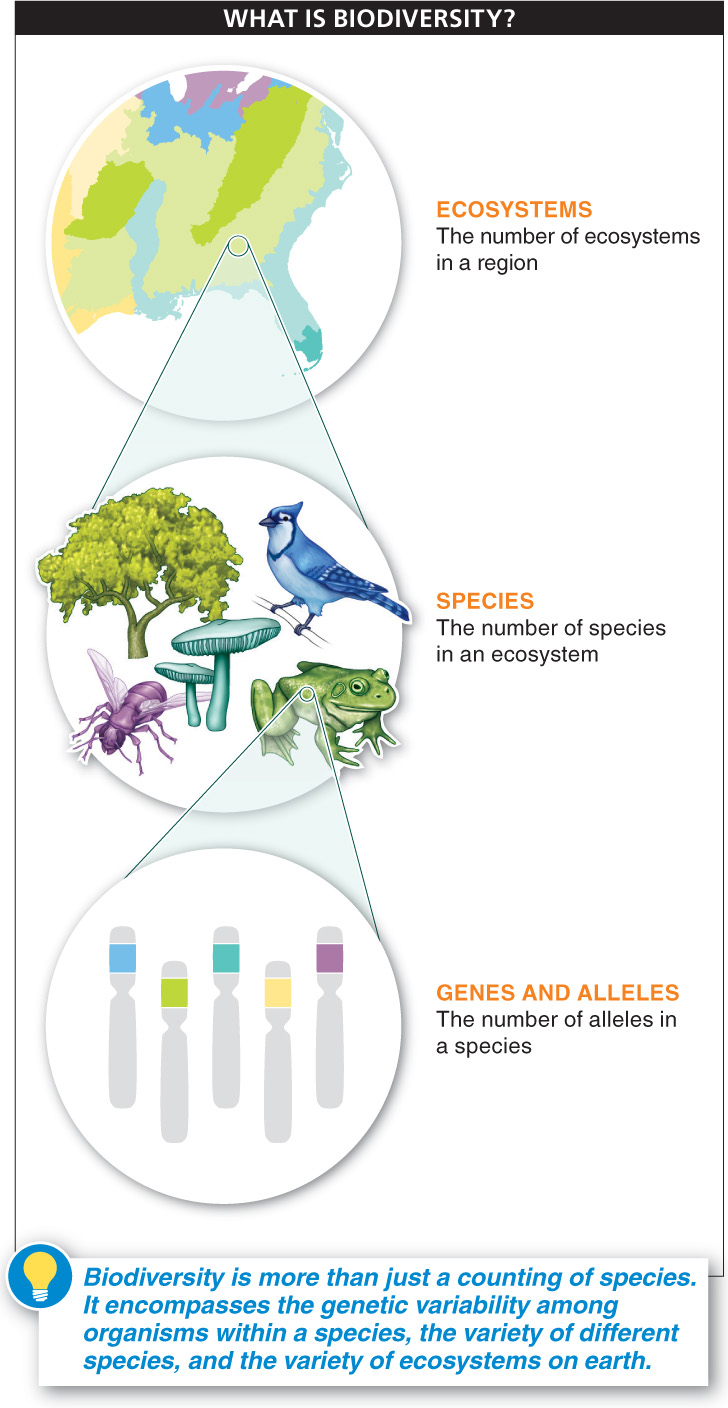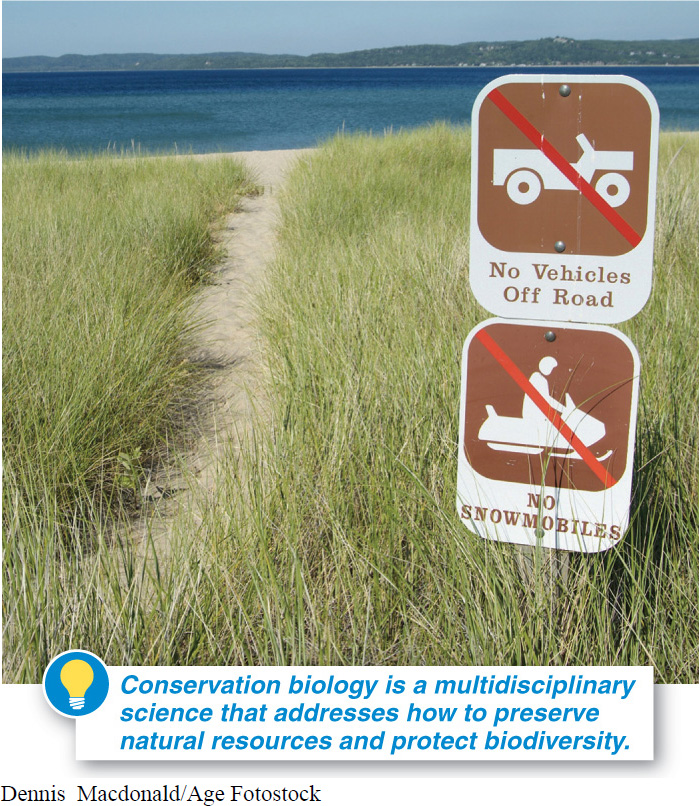Which habitat has greater biodiversity, one with 3 or 4 species each of birds, reptiles, mammals, plants, and insects, or one with 38 unique species of fruit flies, or one with 100 radically different species of prokaryotes (FIGURE 16-4)?

If you were given the task of overseeing the conservation of biodiversity in a region where these three habitats occur, which habitat would you protect first? In making your decision, you might prioritize the number of different classes or families of organisms in a habitat, or maybe the number of distinct species in the habitat, which is, in fact, the most commonly used measure of biodiversity. In doing so, however, you’d be acknowledging that biodiversity can be prioritized in many ways and that any assessment is a function of your values, biases, and interests. But this recognition helps us to discuss, manage, use, and conserve biodiversity in a practical and less ambiguous way.
Conservation biology is the interdisciplinary field that addresses how to understand and preserve the natural biological resources of earth, including its biodiversity at all levels (FIGURE 16-5). And the complexities of managing biodiversity directly affect the decisions that conservation biologists make. In this chapter, we explore how the actions of humans can have significant, even disastrous, consequences for biodiversity and natural resources, and we also explore the strategies that have been developed for effective conservation.

655
Underpinning many of the difficulties in conservation biology is that biodiversity, as we’ve noted, can have value for humans in so many different ways. Throughout the chapter, we’ll see how this complexity makes it difficult to balance competing interests when they are in conflict.
TAKE-HOME MESSAGE 16.3
Assessing biodiversity can be difficult because it must be considered at multiple levels, from entire ecosystems to species to genes and alleles. In practice, biodiversity is most often defined as the number of distinct species in a habitat, which has important implications for conservation biology—
Biodiversity is most commonly defined as the number of distinct species in a habitat. Although, sometimes, this is slightly modified to include the number of different classes or families of organisms. At what levels can biodiversity be considered?
Biodiversity can be considered at multiple levels, from the ecosystem to species to genes and alleles.